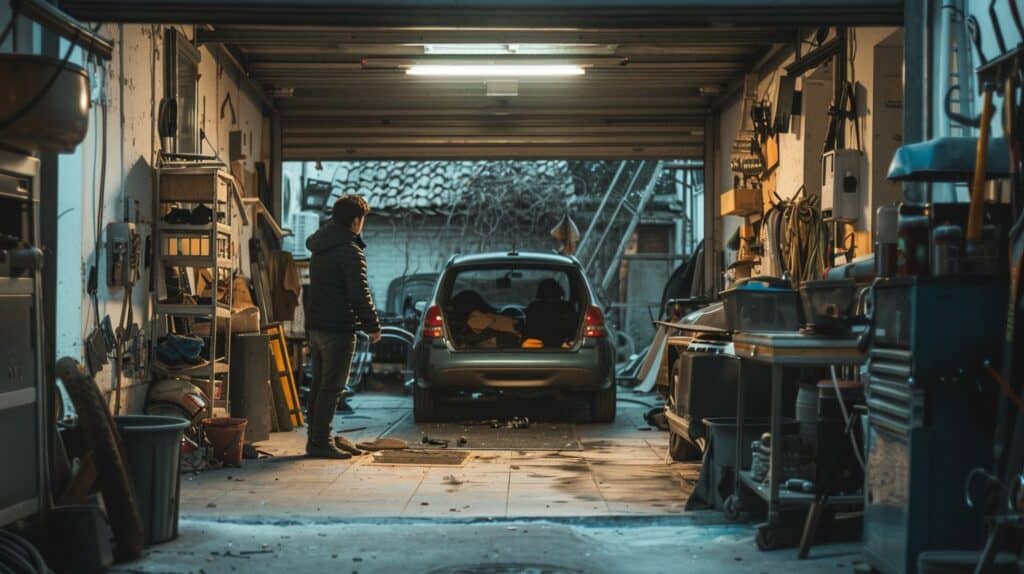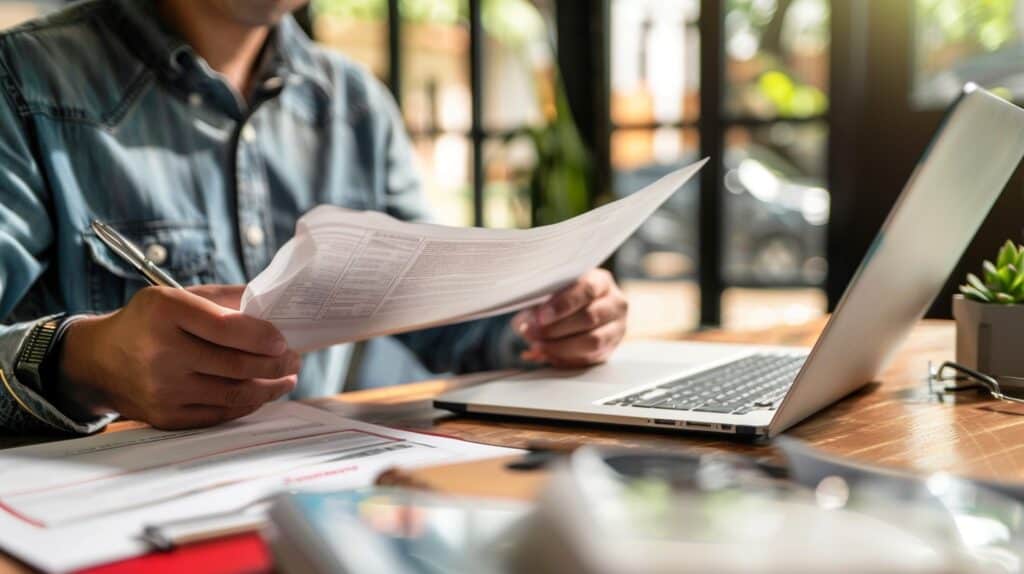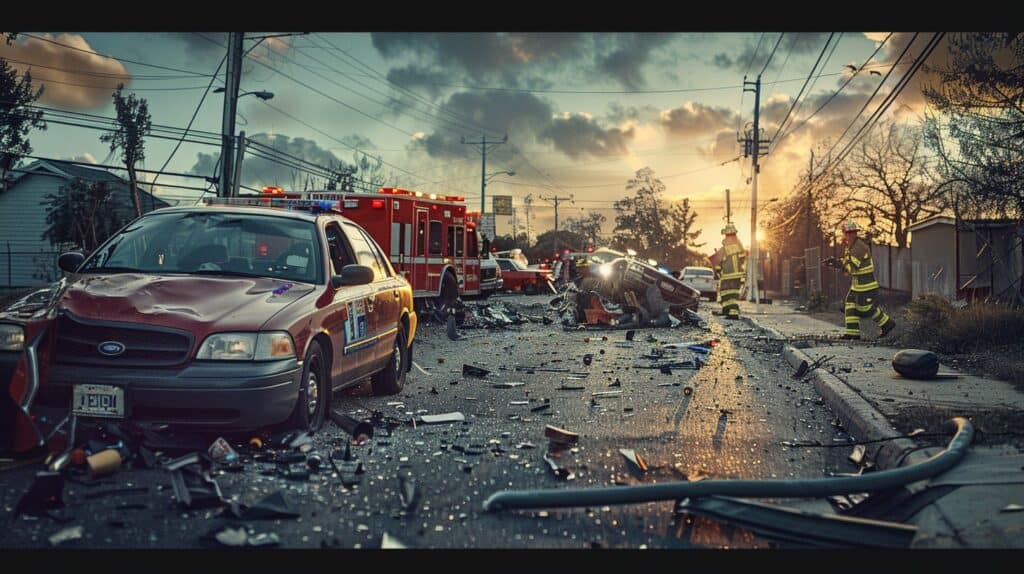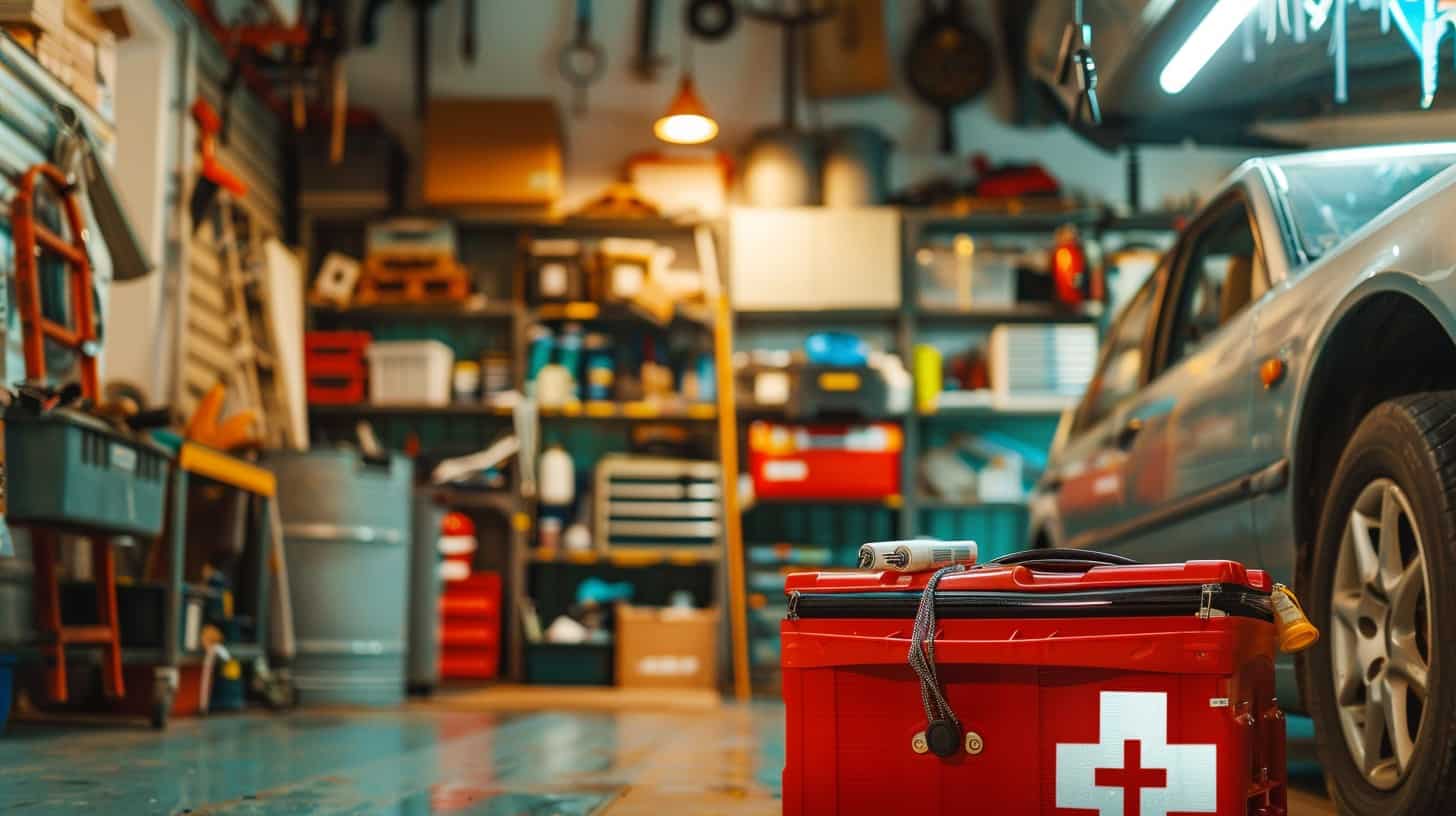No one plans to have a car accident, yet they happen every day. A surprising fact: being ready can make a big difference. This article will guide you on how to prepare for the unexpected, making sure you’re as safe as possible if an accident occurs.
Get set to learn something valuable!
Key Takeaways
Pack an emergency kit in your car with essentials like a flashlight, first aid kit, warning triangles, water and snacks, blankets, and a cell phone charger to stay safe if an accident happens.
Keep important documents such as your insurance card, vehicle registration, emergency contact list, health insurance information, and any medical condition details easily accessible in your glove box.
Understand every detail of your auto insurance policy and keep the information where you can quickly grab it. Know what you’re covered for to make dealing with accidents smoother.
Stay calm at the scene of an accident. Exchange information accurately with the other driver including insurance details, personal contact info, and take pictures of the damage for records.
Document everything at the accident scene with photos from different angles focusing on damages to both vehicles, any injuries, road conditions that could have contributed to the crash and weather conditions.
Table of Contents
Preparing Your Car for Potential Accidents

Keep your car’s trunk packed with an emergency kit, just like a squirrel stashes nuts for winter. Always have your important papers in the glove box, ready to grab faster than you can say “oops”.
Keeping an emergency kit
Getting ready for a car crash means having the right tools on hand. Your car should always have an emergency kit for those just-in-case moments. Let’s break down what needs to be in this kit:
- Flashlight and Batteries: Power outages or nighttime accidents need clear visibility. A strong flashlight can help you check your vehicle and surroundings.
- First Aid Kit: This box is vital for treating cuts, scrapes, or any minor injuries right after an accident. It should have band-aids, antiseptic wipes, and gauze.
- Orange Cones or Warning Triangles: Placing these around your car warns other drivers to slow down and steer clear, keeping everyone safer.
- Bottled Water and Energy Bars: You never know how long you’ll wait for help. These items keep hunger and thirst at bay, especially in remote areas.
- Blankets and Coats: Staying warm is crucial if you’re stranded in cold weather. These can also comfort anyone in shock.
- Cell Phone Charger: Keeping your phone charged ensures you can call for help and inform family members about the situation.
Having necessary documents ready
After stocking your car with an emergency kit, the next smart move is making sure you have all the necessary documents ready. This step is like wearing a safety net – it’s there to catch you if things go south. Here’s a checklist to help you stay organized and prepared:
- Proof of Car Insurance: Tuck your insurance card or a copy in the glove compartment. It’s not just a good idea; it’s the law. You’ll need this when exchanging details at the scene of any motor vehicle accident.
- Vehicle Registration: Keep it close to your insurance information. If a police officer comes to the scene, they’ll ask for it.
- Emergency Contact List: In case you’re unable to communicate, let this list speak for you. Include family members, your primary care doctor, and anyone else who should know if you’re in a car wreck.
- Health Insurance Card: If an ambulance ride or a trip to the emergency room is needed, having your health insurance info handy will streamline things.
- List of Medical Conditions and Medications: This can be a lifesaver, literally. If medical treatment is required after an automobile crash, this info will help EMTs treat you properly.
- Car Accident Lawyer Contact Information: You might never need it, but if things get complicated with insurance claims or lawsuits after a car accident, having easy access to legal advice is invaluable. Many offer free consultations, so having their number could save lots of headaches.
Understanding Your Auto Insurance Policy

Get to know every detail of your auto insurance policy, inside and out. Keep your insurance info easy to grab when needed.
Knowing your coverage details
Keep your auto insurance proof in the glove compartment. This step is key to knowing what you’re covered for. If an accident happens, you’ll want this info close by. Also, make sure you have a contact number ready for filing claims fast.
It’s all about being prepared.
Know what your policy covers, like roadside assistance and uninsured motorist protection. These details matter if you’re caught in a fender-bender or something more serious in places like DuPage County or Bolingbrook.
Quick access to your coverage can take some of the pain out of dealing with auto accidents.
Keeping insurance information accessible
Now that you’ve got the lowdown on what your auto insurance policy covers, it’s crucial to make sure you can get your hands on that information when you really need it. Stash a copy of your car insurance proof right in the glove compartment.
This move is a game-changer for quick access after any motor vehicle accident. Plus, having a specific place for these documents means less panic and more action when every second counts.
Also, jot down your claim filing number and keep it with your insurance card. Why? Because talking to your insurance company ASAP can make things smoother. And let’s not forget about roadside assistance.
Circle or highlight this info because if you’re stuck at the side of the road, knowing who to call can turn a nightmare into just a bad dream. Always check that your cell phone is charged before hitting the road; throw in a charger too for good measure.
After all, being prepared isn’t just smart—it’s essential for peace of mind behind the wheel.
Actions to Take at the Accident Scene

If you find yourself in a fender-bender, stay cool and get the other driver’s info. Snap pictures of the scene for your records – they’re worth a thousand words later on. This is crucial even if both drivers leave the scene.
Remaining calm
Staying cool under pressure isn’t just good advice; it’s a must-do at the scene of a car accident. Panic and stress cloud judgment, making it harder to handle the situation. Take deep breaths and focus on what needs to be done next.
This calm approach ensures safety and health before you even think about calling a car accident attorney.
Exchanging information smoothly with the other driver becomes way easier when you’re calm. Grab your insurance info, jot down notes or snap photos without letting emotions take the wheel.
Remember, managing this calmly can minimize further issues, setting a clear path for any necessary legal care later on.
Exchanging information with the other driver
After keeping your cool, the next step is to exchange information with the other driver. This part is crucial and sets the stage for everything that follows. Here’s how to do it right:
- Make sure you’re both in a safe spot. Before anything else, check that you and the other driver are out of traffic’s way.
- Pull out your insurance card. You’ve got your proof of car insurance tucked away in your glovebox for moments like this.
- Share contact details. Give them your name, phone number, and address. Get theirs as well.
- Talk about car info. Swap details about your cars – make, model, color, and year.
- Discuss insurance. Share the name of your insurance company and policy number. Remember to ask for theirs too.
- Record the scene. Use your phone to take pictures of both cars and any visible damage.
- Look for witnesses. If anyone saw what happened, get their contact information as well.
- Note down specifics about the accident location. Mention street names or nearby landmarks.
Documenting the accident scene
Taking pictures at the scene of a car crash is like capturing a moment in time. These photos can speak volumes during insurance claims or legal matters.
- Snap wide shots of the entire scene. This gives a bird’s-eye view of what happened. Show where each car ended up and important details like traffic signs.
- Get close – up pictures of damages. Both vehicles need this attention. Even minor scratches are worth capturing.
- Photograph any visible injuries. If you or anyone else got hurt, take careful pictures of the injuries.
- Look for skid marks on the road. They tell a story about how the cars moved during the crash.
- Capture images of road conditions. Wet roads, ice, or debris might have played a role in the accident.
- Don’t forget the weather. A quick picture showing if it’s sunny, raining, or foggy helps explain conditions during the accident.
- Take photos from different angles. Each angle provides new info that might be useful later.
- Record license plates and insurance cards. It’s an easy way to keep track of important details.
FAQs About How To Prepare For A Car Accident
What should I do to be ready for a car crash?
Start by chatting with your insurance agent about no-fault and liability coverage. Make sure you have underinsured motorist coverage too. Keeping an emergency kit in your trunk is like having a superhero cape in the backseat – it’s essential!
How can I protect myself from big bills after a car accident?
Talk to your insurance buddy about covering all bases, including medical expenses. If you’ve got Medicaid or Medicare, check how it plays into car accidents. It’s better to know your safety net than to learn the hard way.
Is there a smart way to act right after a fender-bender?
Yes! First, make sure everyone’s okay; then hit those hazard lights like they’re buzzers on a game show. Swap info with the other driver, but keep opinions about who’s at fault zipped up tight.
Can knowing traffic laws help me avoid crashes?
Absolutely! Think of traffic laws as the rules of the road game – knowing them keeps you out of trouble spots and away from bumps and scrapes.
Why is it important to understand my emotional reaction after an accident?
Car wrecks can shake up more than just metal; they rattle feelings too! Recognizing emotions like grief or trauma helps heal not just bones, but hearts as well.
Should I practice safe driving even if I’m super careful already?
You betcha! Practice makes perfect, right? Keep an eye on airbags, seat belts, and always give trucks plenty of room—it’s like dancing at arm’s length: safer for everyone involved.


